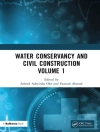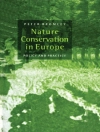Extremely hazardous substances (EHSs) can be released accidentally as a result of result of chemical spills, industrial explosions, fires, or accidents involving railroad cars and trucks transporting EHSs. Workers and residents in communities surrounding industrial facilities where EHSs are manufactured, used, or stored and in communities along the nation’s railways and highways are potentially at risk of being exposed to airborne EHSs during accidental releases or intentional releases by terrorists. Pursuant to the Superfund Amendments and Reauthorization Act of 1986, the U.S. Environmental Protection Agency (EPA) has identified approximately 400 EHSs on the basis of acute lethality data in rodents.As part of its efforts to develop acute exposure guideline levels for EHSs, EPA and the Agency for Toxic Substances and Disease Registry (ATSDR) in 1991 requested that the National Research Council (NRC) develop guidelines for establishing such levels. In response to that request, the NRC published Guidelines for Developing Community Emergency Exposure Levels for Hazardous Substances in 1993. Subsequently, Standard Operating Procedures for Developing Acute Exposure Guideline Levels for Hazardous Substances was published in 2001, providing updated procedures, methodologies, and other guidelines used by the National Advisory Committee (NAC) on Acute Exposure Guideline Levels for Hazardous Substances and the Committee on Acute Exposure Guideline Levels (AEGLs) in developing the AEGL values.Using the 1993 and 2001 NRC guidelines reports, the NACconsisting of members from EPA, the Department of Defense (DOD), the Department of Energy (DOE), the Department of Transportation (DOT), other federal and state governments, the chemical industry, academia, and other organizations from the private sectorhas developed AEGLs for more than 270 EHSs. In 1998, EPA and DOD requested that the NRC independently review the AEGLs developed by NAC. In response to that request, the NRC organized within its Committee on Toxicology (COT) the Committee on Acute Exposure Guideline Levels, which prepared this report. This report is the fourteenth volume in that series. Acute Exposure Guideline Levels for Selected Airborne Chemicals: Volume 14 summarizes the committee’s conclusions and recommendations.
Board on Environmental Studies and Toxicology & Committee on Acute Exposure Guideline Levels
Acute Exposure Guideline Levels for Selected Airborne Chemicals [PDF ebook]
Volume 14
Acute Exposure Guideline Levels for Selected Airborne Chemicals [PDF ebook]
Volume 14
Kup ten ebook, a 1 kolejny otrzymasz GRATIS!
Język Angielski ● Format PDF ● Strony 290 ● ISBN 9780309283090 ● Wydawca National Academies Press ● Opublikowany 2013 ● Do pobrania 3 czasy ● Waluta EUR ● ID 7144184 ● Ochrona przed kopiowaniem Adobe DRM
Wymaga czytnika ebooków obsługującego DRM












